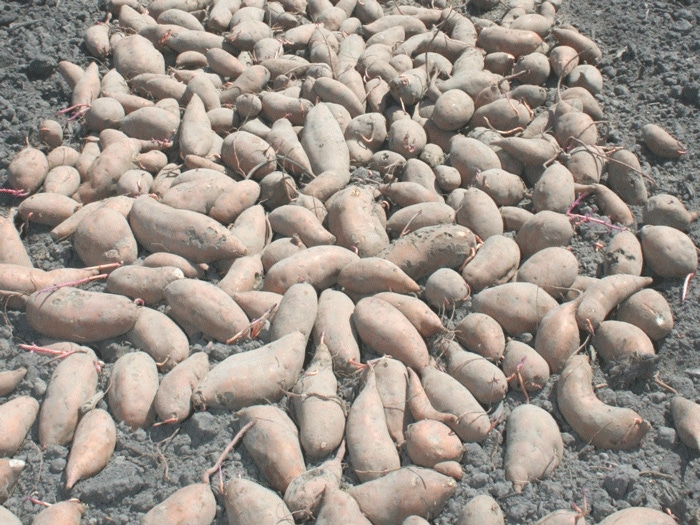July 20, 2011

North Carolina is the leading state when it comes to producing both sweet potatoes and tobacco, and a new North Carolina State University research project is designed to build on both strengths to create new markets for farmers.
The Sweet Potato Dehydration Project is exploring ways to use tobacco-curing barns to dry sweet potatoes for use in pet food and animal feed.
The project is the brainchild of Mike Boyette, a North Carolina State professor of agricultural engineering, and John Kimber, project director of the North Carolina Sweet Potato Commission Foundation.
They believe that having a more economical way of drying sweet potatoes than the drum-drying technique now used in the United States could allow the state’s producers to compete with Chinese imports that are used in pet food and animal feed produced in the United States.
With a grant from the Rural Advancement Foundation International, or RAFI, they are figuring out if drying sweet potato slices with existing tobacco curing technology is feasible, if it fits a market need and whether it offers a chance for sweet potato and tobacco growers to make a profit.
Most of North Carolina’s sweet potato growers also grow tobacco, so they have tobacco curing barns that sit idle most of the year, when tobacco harvesting season isn’t taking place.
Because North Carolina has storage facilities that can hold sweet potatoes all year, farmers could be drying sweet potatoes year-round in the heated barns, Boyette says.
The dried product — sliced, diced, cut French-fry style or ground into flour — could be made from sweet potatoes for which there’s a limited market: those that are too large or too small to be sold to grocery stores.
You May Also Like




